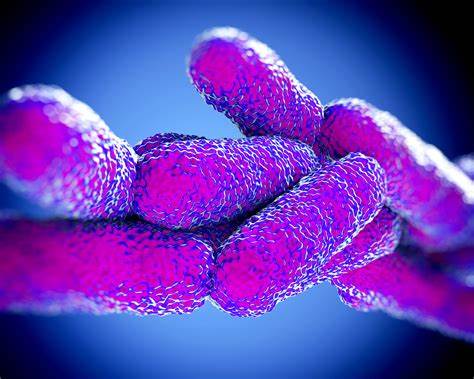How often should I carry out a landlord Legionella risk assessment?
Have you asked: how long does a legionella certificate last? We look at who can carry out a risk assessment and the risks of legionnaires’ disease.
If you are looking at rental properties with water systems that could potentially lead to a risk of Legionella, then it is recommended that a Legionella risk assessment is carried out once every one to two years.
A Legionella risk assessment should also be done before a new tenancy at the property begins. Also, whenever major changes occur to the property's water systems, then it is a good idea to perform a risk assessment.
Who can carry out a risk assessment?
In the majority of domestic cases, there is no special training required in order to conduct a type of Legionella risk assessment.
The individual who is performing the assessment only ever needs to be competent enough to be able to carry out a thorough investigation successfully. When we discuss competency, in this situation, we mean the individual having all the proper health and safety knowledge requirements.
The individual must also have all the necessary skills and experience to complete the risk assessment with no issues. The person who carries out the assessment may be the building owner, the business owner, Legionella responsible person, or the duty holder.
For some people, hiring a professional is their preferred method. This is because it ensures that all the important areas will be covered. Hiring a professional is also a good cause of action if you are not knowledgeable enough to go through the risk assessment process yourself.
Can you carry out a risk assessment yourself?
If you are the owner of a small property that has a simple hot and cold water system installed, then you can decide to conduct your property's risk assessment yourself. The results after the examination may reveal that there is no need for Legionella testing and that easy steps can be taken in order to minimise all of the property's risks.
However, even if the risk assessment is as straightforward as possible, you can never be one hundred percent sure that you have covered all the requirements with enough scrutiny to minimise the risk of Legionella at your property completely.
This is why we recommend contacting Legionella experts, they can provide you with a detailed risk assessment, plus great guidance and the peace of mind of knowing that all of your Legionella legal requirements have been met.

What is Legionella?
Legionella is a type of bacteria that can cause Legionnaires' disease and Pontiac fever. This is collectively known as legionellosis. The bacteria got its name from scientists after an outbreak in Philadelphia in the year 1976. While this outbreak was taking place, many of the people who found themselves extremely ill were attending an American Legion convention.
On average, there are approximately 200 and 250 reported and confirmed cases of Legionnaires' disease each year in England and Wales, although this number is thought to be significantly underestimated.
Recent studies have shown that the real number of individuals with Legionnaires' disease per year may be 1.8 to 2.7 times higher than what has been reported in the past. This is due to Legionnaires' disease being undiagnosed in many situations.
People catch Legionnaire's disease or Pontiac fever when they breathe in tiny droplets of water containing Legionella that hangs in the air. It is uncommon for people to spread Legionnaires' disease around to other people. However, this can occur under very rare circumstances.
Legionella grows naturally in freshwater environments, such as streams and lakes, although these conditions in these environments are rarely exact enough for people to catch the disease from these sources.
Outbreaks are more likely to occur from zones such as man-made systems where water is stored, such as ventilation systems, cooling towers, and hot and cold water systems.
What are the risks of Legionnaires' disease?
Legionnaire's disease can be incredibly serious for those that become infected. When a person becomes infected with Legionnaires' disease, they will have the following symptoms:
- very high fevers
- constant coughing
- head aches
- nausea
- shortage of breath
The symptoms associated with Legionnaire's disease will usually last somewhere between two to ten days. If the disease is identified quickly enough, then the condition can sometimes be treated with antibiotics.
Some people are more vulnerable to the various risks of Legionella, these people include people with issues with their lungs, poor immune functions, and older people.
What does a landlord Legionella risk assessment involve?
A Legionella risk assessment will usually involve every water system that resides within a rental property. The assessment will involve the following:
- Identification of who is at risk
- The identification of potential hazards and the various levels of risk present
- The examination and testing of the water systems for Legionella*
- Applying suitable control measures in place in order to minimise the risk
- Document the various findings of the assessment
- Analyse the assessment as necessary
The testing and sampling of water for Legionella bacteria is not a legal requirement for all landlords, although it is a typical part of the majority of Legionella risk assessments that have been carried out by a professional

All Legionella risk assessments should be carried out by a person who has a full and capable understanding of the hazards that Legionella poses.
Some landlords may feel confident enough to go through this process themselves, but if they do not feel qualified or do not have the time, then it can easily be arranged for a professional assessor to carry out the assessment.
If a landlord decides to book a professional Legionella inspection, they will receive a full report containing the information listed above. This includes significant findings, as well as any suggested control measures.
How can landlords minimise the risks of Legionella?
In order to help with the reduction of the risk of Legionella, the Health and Safety Executive has put forward some simple control measures; these include:
- Flushing out the entire water system. This should be done before the property is let. During void periods, this should be done once a week.
- All systems and tanks should be very tightly and firmly fitted, this is done so that debris does not find its way into the system.
- Control parameters should be set. One example of these parameters includes setting the temperature of the hot water cylinder so that the hot water is always stored at 60°C
- Any pipework deemed faulty and redundant should be removed or altered.
- The controls described above are the landlord's responsibility, although tenants should also be notified of any safety measures that have been put in place and be advised to do the following:
- Property's showerheads need to be regularly disinfected and cleaned
- Any set temperature parameters should never be adjusted
- If there are any issues with the water system, such as the hot water not working as it should, then the landlord needs to be notified as soon as possible.
If you are concerned about legionnaires' disease in Southampton and the surrounding areas, contact our expert consultant today. We can help you with legionella management and legionella control throughout Southampton, Portsmouth, Hampshire and the surrounding areas.
